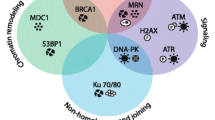Abstract
Intensified adenosine triphosphate (ATP) degradation following therapeutic hyperthermia is often observed in solid tumors. As a result, accumulation of purine catabolites can be expected together with formation of protons at several stages during degradation to the final product, uric acid. Proton formation in turn can contribute to the development of heat-induced acidosis. Furthermore, oxidation of hypoxanthine and xanthine may result in generation of reactive oxygen species, which may lead to DNA damage, lipid peroxidation and protein denaturation, thus also contributing to heat-induced cytotoxicity. In hyperthermia experiments a tumor-size-dependent, significant increase in the levels of the following catabolites has been demonstrated: Σ[IMP+GMP] (sum of guanosine and inosine monophosphate levels), inosine, hypoxanthine, xanthine and uric acid, along with a drop in ATP and guanosine triphosphate (GTP) levels. These data suggest that formation of reactive oxygen species and protons during purine degradation may indeed play a significant role in the antitumor effect of hyperthermia.
Similar content being viewed by others
References
Anderstam, B., Vaca, C., and Harms-Ringdahl, M., Lipid peroxide levels in a murine adenocarcinoma exposed to hyperthermia: the role of glutathione depletion. Radiat. Res.132 (1992) 296–300.
Ando, M., Katagiri, K., Yamamoto, S., Asanuma, S., Usuda, M., Kawahara, I., and Wakamatsu, K., Effect of hyperthermia on glutathione peroxidase and lipid peroxidative damage in liver. J. Therm. Biol.19 (1994) 117–185.
Endrich, B., Hyperthermie und Tumormikrozirkulation. Beitr. Onkol.31 (1988) 1–138.
Gerweck, L. E., Modifiers of thermal effects: environmental factors, in: Hyperthermia and Oncology, vol. 1, pp. 83–98. Eds M. Urano and E. Douple. VSP, Utrecht 1988.
Gerweck, L. E., Dahlberg, W. K., Epstein, L. F., and Shimm, D., Influence of nutrient and energy deprivation on cellular response to single and fractionated heat treatments. Radiat. Res.99 (1984) 573–581.
Gerweck, L. E., Jennings, M., and Richards, B., Influence of pH on the response of cells to single and split dose of hyperthermia. Cancer Res.40 (1980) 4019–4024.
Gerweck, L. E., Urano, M., Koutcher, J., Fellenz, M. P., and Kahn, J., Relationship between energy status, hypoxic cell fraction, and hyperthermic sensitivity in a murine fibrosarcoma. Radiat. Res.117 (1989) 448–458.
Issels, R. D., Fink, R. M., and Lengfelder, E., Effects of hyperthermic conditions on the reactivity of oxygen radicals. Free Rad. Res. Communs2 (1986) 7–18.
Kelleher, D. K., Engel, T., and Vaupel, P., Changes in microregional oxygenation, ATP and lactate distribution in subcutaneous rat tumours upon water-filtered IR-A hyperthermia. Int. J. Hyperthermia11 (1995) 241–255.
Koutcher, J. A., Barnett, D., Kornblith, A. B., Cowburn, D., Brady, T. J., and Gerweck, L. E., Relationship of changes in pH and energy status to hypoxic cell fraction and hyperthermia sensitivity. Int. J. Radiat. Oncol. biol. Phys.18 (1990) 1429–1435.
Krüger, W., Mayer, W. K., Schaefer, C., Stohrer, M., and Vaupel, P., Acute changes of systemic parameters in tumourbearing rats, and of tumour glucose, lactate, and ATP levels upon local hyperthermia and/or hyperglycaemia. J. Cancer Res. clin. Oncol.117 (1991) 409–415.
Lin, J. C., Levitt, S. H., and Song, C. W., Relationship between vascular thermotolerance and intratumor pH. Int. J. Radiat. Oncol. clin. biol. Phys.22 (1991) 123–129.
Löffler, G., Intermediärstoffwechsel: Purine und Pyrimidine, in: Physiologische Chemie, 4th ed., pp. 505–521. Eds G. Löffler and P. E. Petrides. Springer, Berlin, Heidelberg, New York 1988.
Lyons, J. C., Kim, G. E., and Song, C. W., Modification of intracellular pH and thermosensitivity. Radiat. Res.129 (1992) 79–87.
McCord, J. M., and Omar, B. A., Sources of free radicals. Toxicol. Industr. Health9 (1993) 23–37.
Schaefer, C., Mayer, W. K., Krüger, W., and Vaupel, P., Microregional distributions of glucose, lactate, ATP and tissue pH in experimental tumours upon local hyperthermia and/or hyperglycaemia. J. Cancer Res. clin. Oncol.119 (1993) 599–608.
Sies, H. (ed.) Oxidative Stress. Academic Press, Orlando 1985.
Skibba, J. L., Quebbeman, E. J., and Kalbafleisch, J. H., Nitrogen metabolism and lipid peroxidation during hyperthermic perfusion of human livers with cancer. Cancer Res.46 (1986) 6000–6003.
Song, C. W., Tumor blood flow response to heat. Funktionsanalyse biolog. Systeme20 (1991) 123–141.
Streffer, C., Biological basis of thermotherapy, in: Biological Basis of Oncologic Thermotherapy, pp. 1–71. Ed. M. Gautherie. Springer, Berlin, Heidelberg, New York, 1990.
Vaupel, P., Pathophysiological mechanisms of hyperthermia in cancer therapy, in: Biological Basis of Oncologic Thermotherapy, pp. 73–134. Ed. M. Gautherie. Springer, Berlin, Heidelberg, New York 1990.
Vaupel, P., and Kelleher, D. K., Metabolic status and reaction to heat of normal and tumor tissue, Medical Radiology—Thermoradiotherapy and Thermochemotherapy, vol. 1 pp. 157–176. Eds. M. H. Seegenschmiedt, P. Fessenden, and C. Vernon. Springer. Berlin, Heidelberg, New York 1995.
Vaupel, P., Kelleher, D. K., and Krüger, W., Water-filtered infrared-A radiation: a novel technique to heat superficial tumors. Strahlenther. Onkol.168 (1992) 633–639.
Vaupel, P., Okunieff, P., and Neuringer, L. J., In vivo31P-NMR spectroscopy of murine tumors before and after localized hyperthermia. Int. J. Hyperthermia6 (1990) 15–31.
Yoshikawa, T., Kokura, S., Tainaka, K., Itani, K., Oyamada, H., Kaneko, T., Naito, Y., and Kondo, M., The role of active oxygen species and lipid peroxidation in the antitumor effect of hyperthermia. Cancer Res.53 (1993) 2326–2329.
Yu, B. P., Cellular defenses against damage from reactive oxygen species. Physiol. Rev.74 (1994) 139–161.
Author information
Authors and Affiliations
Rights and permissions
About this article
Cite this article
Busse, M., Vaupel, P. Accumulation of purine catabolites in solid tumors exposed to therapeutic hyperthermia. Experientia 52, 469–473 (1996). https://doi.org/10.1007/BF01919318
Issue Date:
DOI: https://doi.org/10.1007/BF01919318



